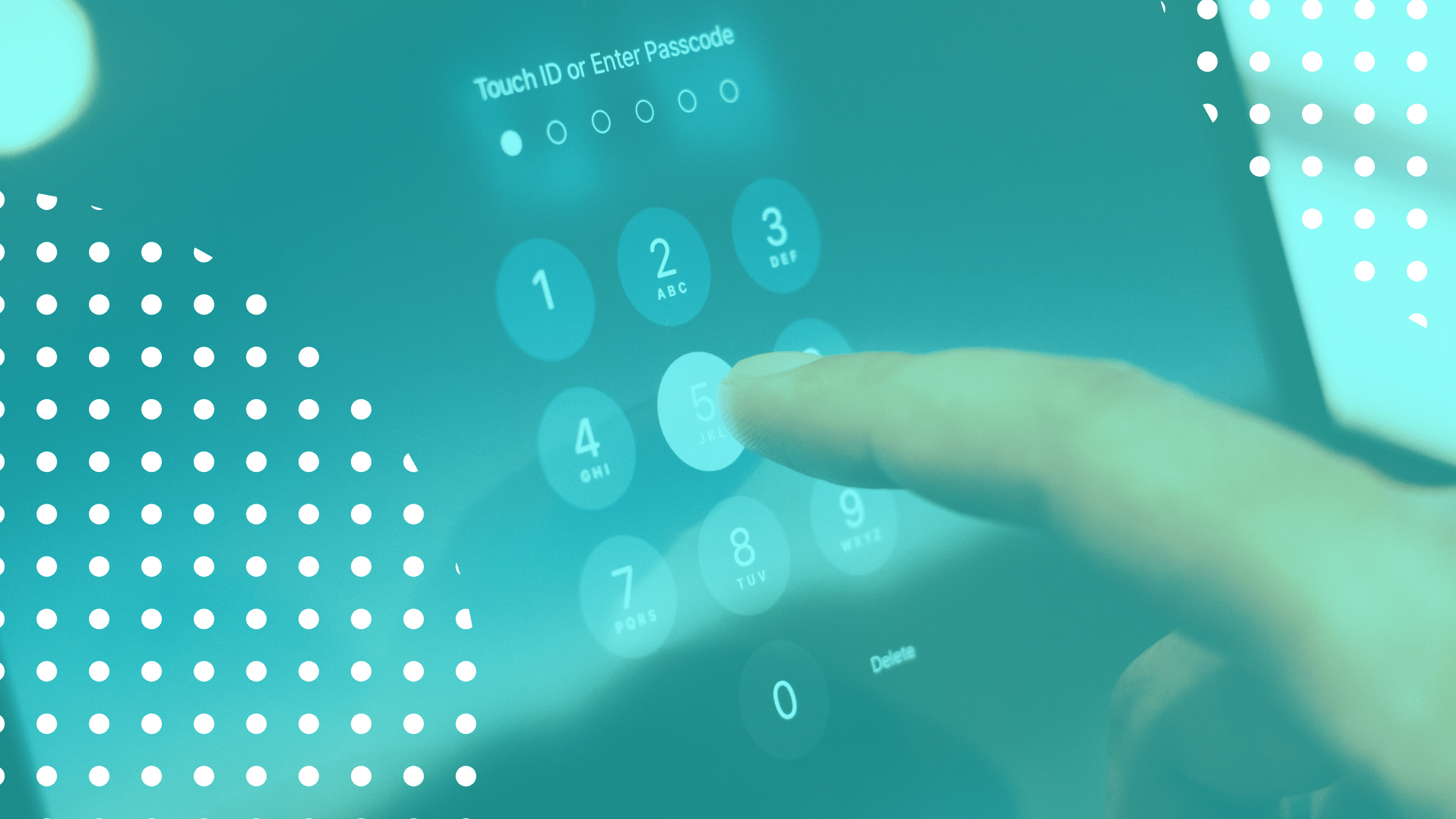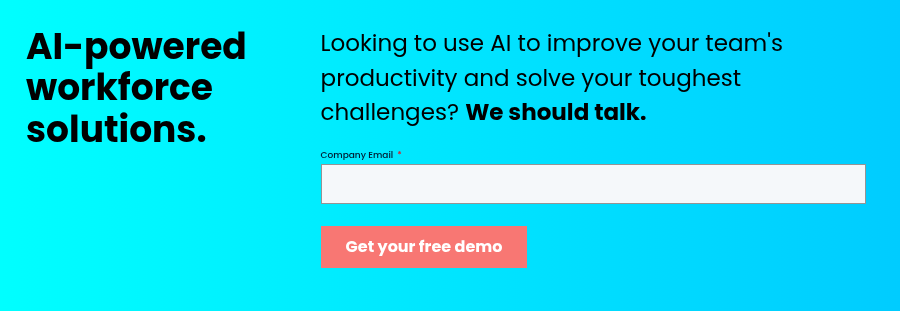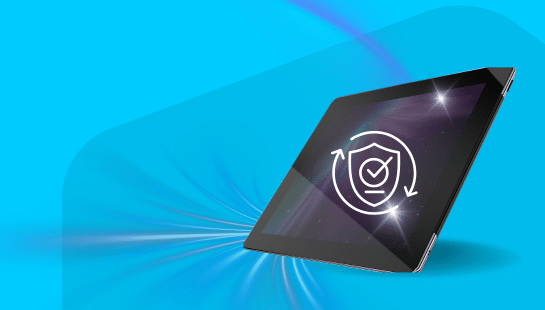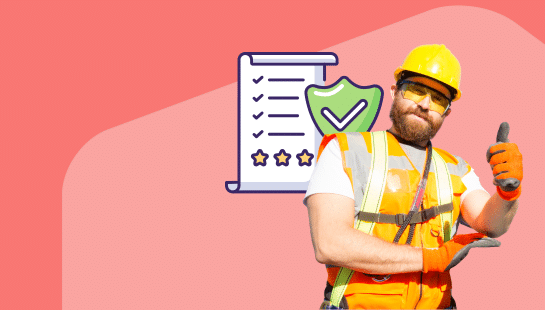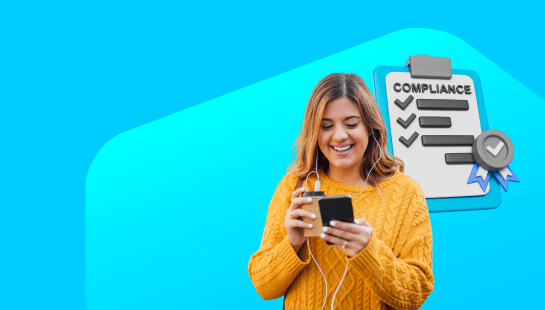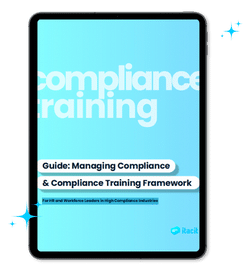The pandemic has changed how companies track their employees through AI monitoring. Before COVID-19, only 30% of large employers used these tracking technologies. That number has now jumped to 60%. AI-driven monitoring tools now spark heated debates about workplace privacy and productivity.
Employee monitoring software sales keep growing, but new research questions whether it really works. Studies from Cornell show that AI tools meant to track employee behavior might backfire. They can lower productivity and make more people quit. The mental health toll is real – 45% of monitored employees say these technologies hurt their wellbeing. Companies need these tools to measure performance, but organizations like the CFPB point out a problem. Many businesses collect personal and biometric data without asking employees first.
Your organization faces new possibilities and risks as AI monitoring software becomes common. These tools can track productivity and manage risks, but you need to set them up carefully. A TUC poll reveals that 60% of employees believe they’re being watched at work. The challenge lies in balancing your business needs with your employee’s privacy rights.
This piece shows you how AI monitoring technology works, what it can and can’t do, and ways to use these systems without losing your team’s trust.
AI-Powered Monitoring: What It Is and Why It’s Growing
AI has changed employee monitoring by a lot through its integration. Traditional workplace tracking used to just record hours or web activity. Now AI-powered monitoring shows a basic change in how companies watch, analyze, and understand what employees do.
Rise of AI employee monitoring software post-COVID
The pandemic created changes in workplace dynamics nobody had seen before. Millions of employees switched to remote work almost instantly. Managers who were used to watching their teams in person faced huge challenges with oversight.
Large employers rarely used monitoring technology before COVID-19, with only 30% adoption. This number doubled to 60% by 2022. Enterprise software saw this segment grow faster than most others. The global employee monitoring solution market will likely hit $1.33 billion by 2027.
Several key factors drove this quick growth:
- Distributed workforce management: Teams worked from different places. AI monitoring tools helped leaders track productivity without being there in person.
- Performance measurement challenges: Remote work made old metrics less useful. Companies needed new ways to measure success with data.
- Security concerns: Remote setups created more security risks. AI monitoring helped spot unusual patterns or possible data breaches.
Companies made work-from-home setups permanent through hybrid models. Leaders found that AI monitoring gave them better insights than they ever had in offices. These systems did more than track activity. They predicted performance, showed engagement levels, and spotted possible retention issues.
Shift from manual to AI-based employee monitoring tools
Old monitoring systems mostly used simple time-tracking, random screenshots, or basic activity logs. These methods had clear limits, they created data but couldn’t explain what it meant or what to do next.
Modern AI monitoring works much better than these simple approaches. AI systems can now:
- Create custom productivity baselines for each worker
- Separate productive from non-productive app usage
- Spot patterns that show burnout or low engagement
- Alert managers about security risks
- Suggest coaching based on how people work
AI systems know how to learn and adapt, unlike old monitoring tools. Manual systems needed people to review and interpret data. AI solutions group activities, find patterns, and create insights automatically.
AI monitoring goes beyond tracking computer activity. New systems look at messages in Slack, Teams, and email. They spot patterns in how people communicate that might show team problems or unhappy employees.
This change from collecting data to gathering intelligence shows a completely new approach. Old monitoring focused on policing what people did. AI tools want to understand behavior and find ways to improve workflows, balance work, and support mental health.
Companies see these technologies as key parts of their digital future. The iTacit AI HR Assistant shows this trend well. It helps HR teams work better with AI-powered insights rather than replacing human workers.
All the same, this change brings up important questions about privacy and ethics. Better technology makes it harder to see where helpful oversight ends and invasion of privacy begins. Business leaders must think over how these powerful tools affect workplace culture and trust. This balance remains tricky even as more companies use these tools.
Most organizations no longer ask if they should use AI monitoring. They focus on using it responsibly. This might be the biggest change of all, monitoring has moved from a basic need to a strategic tool that needs careful management.
Automating Oversight: How AI Tracks Work Activity
AI-powered monitoring has evolved beyond simple surveillance. These smart systems automatically track work activities in multiple ways. They collect data no human could gather manually and create a detailed digital snapshot of employee work patterns.
Screen time tracking with AI
AI employee monitoring software records computer activity without human oversight. Systems track every keystroke and store them in detailed logs. Behavior analytics algorithms use this data to set normal activity baselines.
AI-powered keystroke monitoring delivers nowhere near just raw input data. Pattern-matching algorithms analyze the information to:
- Detect potential insider threats
- Measure individual and team productivity
- Trace the sequence of events leading to problems or data breaches
Modern systems combine keystroke data and synchronize it with video recordings to show the complete picture of employee activities. Managers can see not just what employees did, but also the timing and reasons behind their actions.
Screen monitoring technology has grown beyond taking simple screenshots. AI systems now group applications and websites as productive or unproductive based on role-specific settings. This creates meaningful productivity scores tailored to departments or individual employees instead of using one-size-fits-all metrics.
AI-driven time tracking for remote teams
Remote work growth has pushed the development of smarter time tracking tools. AI-driven solutions run quietly in the background, unlike traditional time clocks that need manual input.
Timely shows this approach well. It captures work activity automatically without disrupting anyone’s workflow. The system creates AI timesheets based on previous patterns and eliminates manual entry errors while staying accurate. Remote teams find this hands-off approach valuable as employees can focus on their work instead of tracking time.
These systems do more than simple time accounting. WebWork’s AI looks at employee attendance and time-off patterns to keep staffing levels optimal. It spots potential burnout risks by scrutinizing performance trends, which helps managers take action before issues grow.
The difference between traditional and AI time tracking stands out clearly. An industry expert explains, “Unlike manual time-tracking apps, which require manual input of hours or pressing a button to clock in and out, automatic time-tracking tools passively monitor activities in the background”. This background monitoring creates accurate work hour records and cuts down administrative work.
Teams working from multiple locations benefit from geofencing features. Systems like Hubstaff clock employees in and out automatically when they enter or leave specific job sites. Field service teams and organizations with spread-out workforces find this especially useful.
Integration with project management tools
AI monitoring systems connect with project management platforms to create smooth workflows between activity tracking and task management. This might be their most powerful feature.
Asana AI shows this integration approach well. It builds artificial intelligence right into existing work processes without needing separate tools. The system works with full knowledge of your business goals and current projects.
These integrations let AI monitoring systems sort time spent on specific projects, tasks, or clients automatically. Managers can generate detailed reports that show exactly how resources support different initiatives. Getting this information manually would be almost impossible to do accurately.
The real-life application brings substantial benefits. Project management integrations help teams find bottlenecks, simplify processes, and improve resource allocation based on actual time spent rather than guesses. Teams get immediate dashboards showing performance and project status. No one needs to chase down time entries or fix errors anymore.
AI employee monitoring tools have grown from simple trackers into detailed productivity platforms. They automate oversight and provide evidence-based insights for better decisions.
Behavioral Analytics: Detecting Risk and Anomalies
AI-powered workplace monitoring goes beyond simple tracking. It now excels at behavioral analytics and identifies unusual patterns that might point to security risks, data theft, or policy violations.
AI pattern recognition for insider threats
Advanced AI algorithms filter through massive workplace data to spot behaviors that differ from normal patterns. User and Entity Behavior Analytics (UEBA) stands out as a powerful tool in this field. These AI-powered monitoring solutions build detailed behavioral baselines for individual users and teams. They then compare current activities against these patterns continuously.
The system works well because it knows what “normal” looks like for each employee. Machine learning models analyze historical data across multiple dimensions:
- Login times and locations
- File access patterns and frequency
- Network activities and data transfers
- Communication patterns across platforms
“These AI systems can learn and adapt to changing behavioral patterns, remaining effective even as user roles evolve within organizations,” explains one industry expert. This adaptability cuts down false positives while staying alert to genuine threats.
To name just one example, the AI flags when an employee who usually downloads small amounts of data starts extracting multiple gigabytes. The system also spots employees opening thousands of files quickly, an action that often signals unauthorized data collection.
Unusual login behavior and data access alerts
AI employee monitoring software spots authentication anomalies that could mean someone has compromised an account. The technology looks at several aspects of login activity:
- Failed login attempts or password resets
- Simultaneous logins from different locations
- Authentication attempts outside normal working hours
- Changes in access patterns after role modifications
A single anomaly rarely tells the whole story. “A single suspicious sign-in might seem benign on its own,” notes one cybersecurity firm. “However, when paired with unusual data access or registration of MFA devices, it can reveal a significant threat”.
This deeper understanding makes AI so effective. One AI security platform found a multi-account hijacking attempt. It connected seemingly unrelated events into a meaningful security story. The system noticed strange ASNs (Autonomous System Numbers) and launched an automated investigation right away.
AI watches data access and movement patterns with incredible detail. It tracks how users handle sensitive information and flags actions like accessing files after hours, downloading files in bulk, or viewing documents unrelated to their job.
File Integrity Monitoring tools with AI catch unusual access patterns and suspicious timing, like after-hours file access or frequent reopening of specific documents.

Real-time flagging of policy violations
AI now makes instant policy enforcement possible. It monitors actions, analyzes data, and applies rules as they happen. This marks a big improvement over traditional compliance methods that found violations days or weeks later.
IBM Watson research shows AI sentiment analysis can spot workplace toxicity with up to 87% accuracy. This feature expands policy enforcement beyond technical violations to find harmful communication patterns.
AI’s strength lies in its immediate response to violations:
- The system triggers immediate alerts if employees enter restricted areas without clearance
- It blocks data transfers to unapproved devices
- HR gets notified about compliance risks when AI detects uncompensated overtime
That said, organizations implementing AI should prioritize transparency. iTacit’s AI HR Assistant provides ethical monitoring options that focus on coaching instead of control. This helps organizations stay compliant while building trust.
The field moves toward systems that combine automated enforcement with human oversight. “AI excels at routine tasks like real-time monitoring, while humans are better suited for strategic oversight and complex decision-making”. This partnership approach maximizes compliance effectiveness and keeps human judgment central to fair workplace policies.
Boosting Productivity Without Micromanaging
AI employee monitoring shows its true value by moving from basic tracking to strategic support. Companies now use these systems to boost how work gets done rather than just monitoring activities.
Workflow optimization through AI insights
AI-powered monitoring systems spot inefficiencies that human managers often miss by analyzing work patterns. AI algorithms can get into individual work styles and priorities. This allows companies to optimize workloads based on each employee’s unique skills and abilities. A customized approach boosts both job satisfaction and productivity.
Automation serves as a life-blood benefit. Many employees burn out from repetitive and mundane tasks that eat up valuable time. AI-driven automation handles these routine activities, such as:
- Data entry and processing
- Email sorting and prioritization
- Simple customer service questions
- Scheduling and calendar management
These optimized workflows remove bottlenecks without human intervention. The technology analyzes data immediately to make decisions affecting multiple business units at once. Marketers can use AI workflows to automatically optimize ad campaigns and direct funds to best-performing segments.
The efficiency gains make a big impact. AI employee monitoring software tracks KPIs immediately and flags issues that need improvement. This ongoing monitoring helps organizations optimize performance through continuous workflow refinements instead of periodic reviews.
AI-driven tools like Phoenix’s AI Time Manager explain team members’ workloads and schedules, which helps managers balance tasks effectively. The system suggests task priority changes, reschedules meetings, and breaks large projects into smaller pieces, all without constant oversight.
Reducing burnout by identifying overload patterns
Employee burnout costs organizations 15-20% of total payroll in voluntary turnover costs alone. AI monitoring systems offer a solution by spotting warning signs before they become serious problems.
AI processes huge amounts of data through predictive analytics to forecast potential employee burnout. Early detection allows proactive support before situations worsen. The technology spots several key warning signs:
AI systems track work patterns to detect risks. These tools monitor worked hours, task completion rates, and break frequency. Employees working over 50 hours weekly often show higher emotional exhaustion, which prompts AI to flag these patterns and suggest workload changes.
AI balances workload distribution by analyzing employee capacity and task needs. Tools predict busy periods and suggest resource allocation to prevent overwhelm. These systems create fair schedules while avoiding difficult shifts to promote a healthier workplace.
A Stanford University study showed AI-driven systems reached 92% accuracy in spotting employee burnout symptoms. A multinational company used an AI wellness program that tracked workloads and communication patterns. It detected burnout in a top performer who seemed fine on the surface. Quick intervention helped the employee access resources and regain motivation.
AI sentiment analysis looks for stress or burnout signs in language use. IBM Watson research suggests these tools can spot workplace toxicity with 87% accuracy. HR departments can identify warning signs like increased absences or lower productivity by analyzing this data.
AI-powered chatbots give employees immediate and customized support based on their work hours and stress levels. These solutions remind workers about scheduled breaks, suggest focus time, and prompt screen breaks.
iTacit’s AI HR Assistant shows this approach in action with ethical monitoring options that focus on coaching rather than control. The assistant helps companies learn about employee well-being while maintaining trust, a crucial balance for any monitoring solution.
Sentiment and Stress Detection in Communication
AI systems can now detect and analyze valuable insights about employee wellbeing through communication channels. Workplace interactions happen more through digital platforms, and AI employee monitoring technology now includes sophisticated sentiment analysis capabilities.
AI sentiment analysis in Slack, Teams, and email
AI systems analyze written communications across workplace platforms to spot signs of stress, frustration, or disengagement. Natural Language Processing (NLP) assesses mood and emotional states from written or verbal communication. The technology does more than track keywords by analyzing:
- Message tone and sentiment changes
- Communication frequency or timing shifts
- Team members’ response patterns
- Stress-indicating writing style changes
AI analyzes emails, instant messages, meeting notes and phone conversations to spot changes in tone, writing style or vocabulary that might show stress or exhaustion. These systems build a baseline of normal communication patterns and flag notable changes that need attention.
Of course, monitoring private communications raises privacy concerns. Many organizations present sentiment analysis as a wellness tool instead of surveillance. To cite an instance, Intel started using sentiment analysis ten years ago to measure workplace morale and spot employee concerns early. This proactive approach helps solve problems before they cause turnover.
The best implementations focus on transparency. An expert points out, “Sentiment analysis should be framed as a listening tool, not a surveillance mechanism”. These systems can warn managers about team dynamics problems they might miss when properly used.

Detecting early signs of disengagement or conflict
AI algorithms spot potential employee disengagement before it affects performance. This marks a major advance, as nearly three out of four HR professionals get surprised by an employee’s decision to quit.
AI monitoring systems track consistency over time, not just activity volume. Each employee’s current behavior gets compared to their past patterns, and systems flag lasting changes. Warning signs often show up in communication patterns:
- Slow message responses
- Less participation in group chats
- Irregular engagement in team discussions
- Language sentiment or tone changes
AI can flag teams at risk of burnout by analyzing business conversations and enable targeted support. Platforms like Teamflect look for missed one-on-ones, feedback inactivity, and lower meeting participation to spot disengagement.
Communication differences cause 39% of workplace conflicts, making NLP AI useful for conflict resolution. These systems analyze personality traits, behavioral cues, speech patterns and written communication to predict employees’ emotional states and possible conflicts. Early detection allows managers to step in before issues grow.
AI helps identify employees who feel stuck, need more challenges, or believe in their organization’s career support. Managers can address engagement issues with tailored approaches instead of generic solutions with a reliable employee engagement software.
iTacit’s AI HR Assistant shows a balanced approach to communication monitoring. Instead of focusing only on productivity metrics. Managers get applicable information without crossing ethical boundaries – crucial since 45% of monitored employees report negative mental health effects from surveillance technologies.
AI monitoring works best as a supplement to human interaction. The technology excels at spotting patterns across large datasets, finding stress indicators that even careful managers might miss. A successful implementation needs clear communication about data use, focusing on employee support rather than punishment.
Legal and Ethical Boundaries of AI Surveillance
AI surveillance capabilities in workplaces continue to grow. Businesses must now follow complex regulations about employee data collection and usage. These legal boundaries help balance improved productivity against employee privacy rights.
FCRA and GDPR implications for employee monitoring
The Fair Credit Reporting Act (FCRA) affects AI-powered monitoring in unexpected ways. The Consumer Financial Protection Bureau (CFPB) has made it clear that many AI monitoring tools fall under “consumer reports” in FCRA. Employers using third-party AI surveillance must now meet strict requirements.
FCRA protections cover AI-generated background reports and algorithmic scores about workers. These rules apply to productivity tracking, performance reviews, and analytical insights about employee behavior.
Companies operating internationally face additional obligations under the General Data Protection Regulation (GDPR). Employers must handle employee data based on principles like purpose limitation and data minimization. Each piece of employee information needs clear justification for collection.
Companies that knowingly violate FCRA face statutory damages between $100 to $1,000 per violation, plus possible punitive damages. The risk grows substantially with each affected employee.
Consent and transparency requirements
Both legal frameworks put emphasis on informed consent. Employers need written authorization under FCRA before they can purchase consumer reports about workers. This consent should appear in a “clear and conspicuous” standalone document.
The need for transparency extends beyond getting initial consent. The CFPB requires detailed information disclosure for “adverse actions” based on monitoring data – including firings, promotion denials, or reassignments. Workers can understand the reasons behind decisions and challenge any inaccuracies.
Federal law requires only one-party consent for monitoring, but state laws differ. California leads with its all-party consent rule for recordings and strong privacy protections. Companies in California should be very careful with any AI monitoring.
Colorado’s new AI Act adds more requirements by creating a “duty of reasonable care” for high-risk AI systems. More states will likely follow with stricter regulations as AI monitoring becomes common.
Data minimization and retention policies
Privacy regulations share data minimization as a fundamental principle. This approach limits collected information, its usage, and storage duration.
Organizations should:
- Limit data collection to business necessities
- Use data only for defined purposes
- Create retention schedules based on business needs
iTacit’s AI HR Assistant shows responsible implementation through ethical monitoring that focuses on coaching rather than control. This method emphasizes transparent data practices with clear business reasoning.
The long-term success of AI monitoring depends on privacy being part of system design from day one. Companies need resilient governance, documentation, and regular audits to meet evolving regulations.
Building Trust: Transparency and Employee Buy-In
Employee trust and acceptance play a vital role in making AI monitoring technologies work. Companies that get this foundation right see substantially higher success rates with their monitoring programs.
How to communicate AI monitoring policies
Clear communication makes all the difference when rolling out AI monitoring tools. Companies need to take the mystery out of the technology. They should tell employees where and how they use it, what governance processes exist, and what benefits they aim to achieve. This openness should cover:
- Explain the what and why – Give employees clear details about monitored activities and the business case behind them
- Make policies available – Put AI monitoring information in your employee handbook and other easy-to-find resources
- Use multiple channels – Town halls, intranet sites, focus groups, and pulse surveys help gather feedback and address concerns
Clear communication isn’t just the right thing to do, the law requires it. Employers must provide “meaningful information” about how AI tools make decisions and their potential risks under various regulations.
Opt-in vs mandatory monitoring models
Companies now face an important choice between optional and required monitoring approaches. The American Privacy Rights Act proposal might soon require employers to let applicants and employees opt out of AI use for major employment decisions.
Opt-in models build more trust. Employees get some control over their data use, especially when AI monitoring affects their performance reviews. This makes sense since 34% of workers would welcome tracking if it helped their career growth, while 33% would accept it to find work-related information.
Using AI for coaching, not just control
The focus should stay on development rather than surveillance during implementation. Employees now expect customized feedback that comes right away. This matters even more for those starting their careers or joining remotely.
iTacit’s AI HR Assistant shows this approach well. It focuses on ethical monitoring options that emphasize coaching over control. The system helps spot when employees might need extra support without creating a watchdog environment.
Trust needs to come before implementation to make AI monitoring work. Research shows that involving the core team in AI deployment, from start to finish, through shared approaches that include co-design from employees in different business units gets more trust and thus encourages more participation.
Responsible Implementation: Tools and Best Practices
Strategic planning and ethical guidelines create the right balance between oversight and privacy in AI employee monitoring. Organizations can maximize benefits and keep employee trust by adopting responsible practices.
Using iTacit’s AI HR Assistant for ethical AI implementation
iTacit’s AI HR Assistant shows how ethical AI works by giving employees quick access to company policies and training documents. The technology provides secure answers from your organization’s knowledge base. A remarkable 87% of users said it made finding answers easier than before.
The assistant customizes information based on employee roles. This targeted method removes uncertainty and compliance risks. It connects training directly to real-life actions.
HR users learned something surprising – 93% discovered unexpected patterns in what employees searched for. These insights revealed knowledge gaps in the organization. Teams can now use this front-line feedback to shape their training strategies.

Creating internal AI ethics taskforces
Responsible AI implementation needs cross-functional teams to oversee governance. These teams should include tech experts, HR representatives, legal advisors, and employees from different departments.
The ethics team should focus on:
- Creating clear ethical guidelines for AI development and use
- Setting up regular AI system monitoring and audits
- Building clear paths to report security and privacy issues
- Building ethical awareness through continuous training
The taskforce guides your organization’s ethical direction and balances innovation with accountability. Specific team members handle AI governance to maintain your values and legal compliance.
Vendor evaluation and bias audits
Companies must assess vendors before using any AI monitoring tools. The Data and Trust Alliance suggests using Algorithmic Bias Safeguards. These include 55 questions in 13 categories to check how vendors detect, reduce, and track algorithmic bias.
Bias audits need to happen regularly, not just once. Up-to-the-minute data analysis dashboards track model performance. Quarterly tests check for bias in updated systems. These audits look at:
- Dataset diversity and representation
- Algorithmic fairness using metrics like demographic parity
- Output monitoring in live environments
AI-powered employee monitoring gives valuable insights. Companies must respect privacy and support employee wellbeing. Organizations can create monitoring systems that strengthen their workforce by doing this and being mindful of best practices.
Conclusion
AI employee monitoring faces a crucial turning point. This piece explores how AI changes workplace oversight, from simple tracking to advanced behavioral analysis. A dramatic rise in adoption after the pandemic shows both the possibilities and challenges organizations face in this digital world.
Success depends on striking the right balance between business needs and employee privacy rights. Numbers paint a clear picture: 60% of large employers now use monitoring technologies, yet 45% of monitored employees face negative mental health effects. These contrasting figures highlight the need to apply this technology thoughtfully.
Well-implemented AI monitoring tools bring significant advantages. They spot workflow inefficiencies, catch security threats through pattern recognition, and detect early signs of employee burnout before managers do. The best systems act as workplace coaches rather than digital overseers. They help teams improve processes without intrusive surveillance.
Legal guidelines keep evolving with the technology. FCRA and GDPR set important boundaries, though different rules across regions make compliance tricky. Organizations also need to think about ethical questions beyond legal requirements, particularly about data reduction, storage rules, and open communication.
Research shows that employees welcome monitoring when they know its goals and benefits. Successful programs make it a priority to communicate clearly about collected data, its importance, and its use. This openness turns potential pushback into active participation.
Smart organizations know monitoring works best as a coaching tool rather than a control mechanism. iTacit’s AI virtual assistant for HR represents this approach by providing role-specific information and finding knowledge gaps that help shape future training plans. This helpful, supportive application builds trust instead of breaking it.
Responsible implementation needs constant oversight through internal ethics committees, regular bias checks, and careful vendor selection. Data collection might seem tempting, but better results come from limiting monitoring to work that lines up with specific business goals.
The way you implement AI employee monitoring at the present time will shape its future. Systems that protect privacy, help development, and stay transparent will create lasting value. Those that focus on surveillance over support risk damaging the trust teams need to function well. Your approach to this innovative technology will influence not just productivity numbers but your entire organization’s culture in the coming years.
